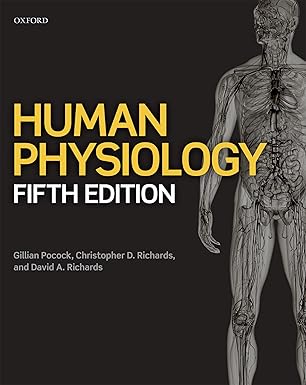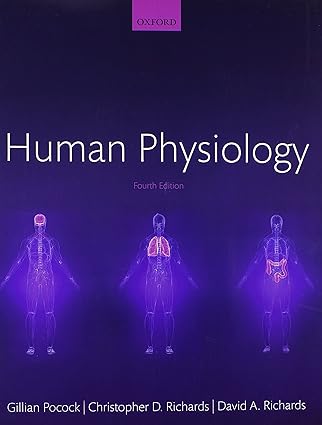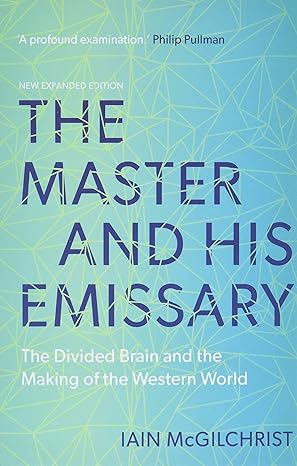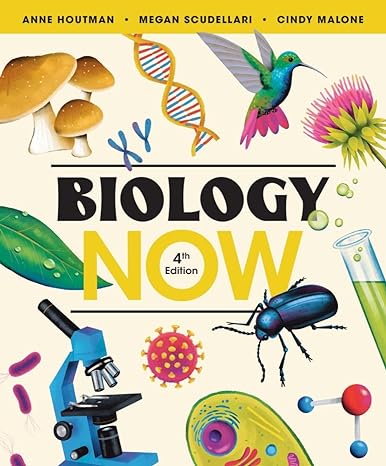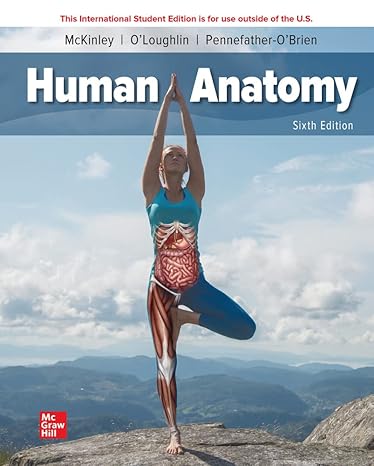2 The person, the environment, and technology: Introduction to the human-tech ladder The person, the environment, and technology: Introduction to the human‐tech ladder The changes we have all seen in technology and corre spondingly with assistive technology in the past 10 years are mind‐boggling. Futurist and inventor Ray Kurzweil (2000) stated early in the twenty‐first century that com puters are 100 million times more powerful than they were 50 years ago. The exponential growth of computer capacity that Kurzweil and others predicted in the late 1990s continues to advance and has the potential for improving all aspects of life (Diamandis and Kotler 2014). These exponential changes in technology make it hard to keep up with the latest innovations. For example, one of the chapter authors worked in an assistive technology laboratory in which serial port add‐ons to computers evolved into Universal Serial Bus (USB) ports rendering the former connections and their attachments obsolete within in less than five years. Currently, com puters no longer come with disk drives and all of the software one needs to load on the computer comes from the cloud. Vicente (2006) stated, “... more and more technology is being foisted upon us at a faster and faster pace” (p. 13). In addition, technology is clearly a necessary part of our lives. For many of us, it is difficult to remember a time when cell phones, laptops, or navigation devices were not available to those who could afford it. Furthermore, the convergence of multiple technologies into a single, small, handheld device such as a smart phone is common as part of our work and personal experiences. Medical technology has evolved to intervene when the body fails. For example, you may know someone who has a heart pacemaker to pick up the pace when the heart lags. Moreover, as older adults live longer in many countries, these family members or neighbors may likely experience a joint replacement or utilize assistive or medical devices to recover or make daily tasks easier on either a short‐term or a long‐term basis. Given the pervasiveness of technology in our lives, it is not surprising that the words “human” and “technology” are conceptualized in new ways to describe the link between our humanness and the non‐ humanness of technology. The “Human‐Tech Ladder” is a unique concept developed by Vicente (2006) to merge the humanistic view of social sciences with the mecha nistic and reductionist views of basic sciences and technological sciences. It is a systems approach that con siders how to holistically match humans and technology. Rather than coming up with a new conceptual model, this book will use Vicente’s Human‐Tech Ladder to provide a systematic way of structuring the text to con sider all of the factors, which interact to make a match between humans and technology. The Human‐Tech Ladder is a five‐level visual model which can be used Active learning prompts Before you read this chapter: 1. Describe the role that technology plays in your life in terms of how you interact with the environment on a daily basis to meet needed and desired tasks and goals. 2. Complete a brief literature search using the keywords, client‐centered, health, disability and assistive technology, medical models of disability, and social models of disability. 3. Using the website, www.resna.org, define assistive technology and locate the eligibility requirements for Rehabilitation Engineering and Assistive Technology Society of North America (RESNA) certification as an Assistive Technology Professional. 4. Define assistive technology using two or more sources. 5. Compare and contrast three definitions of assistive technology. 6. Classify assistive technology in three different ways. Key terms Assistive technology Assistive technology continuum Client‐centered Contextual factors Disability Disability models Environmental factors Environmental intervention (EI) Human‐Tech Ladder Technology Technology and environmental intervention (TEI) Assistive technologies and environmental interventions in healthcare 3 to conceptualize human factors, such as personal and environmental factors that interact with technology. According to Vicente (2006), a bad fit or match occurs if human factors are not at the center of the technology design process. Knowing how the human mind and body react to multiple stimuli and situations with tech nology, and understanding the complexity of human interaction with both the physical and the social envi ronment, can lead to better use of technology (Vicente 2006). This multifactorial approach mirrors development in the field of matching those who have disabilities with technology interventions. Moreover, a multifactorial approach is considered to be critical to making a suc cessful human technology match (National Academies of Sciences, Engineering, and Medicine 2017). This interactive approach in using technology as an interven tion for people with disabilities has not occurred in a vacuum, and changes in ways of thinking about people with disabilities are important to review as an introduc tion to this text. Models of disability With the primary chapter author having practiced in the area of assistive technology for over 20 years, there have been many changes in the field, which influence the things one needs to consider when using assistive tech nology as an intervention. One critical change is the way that disability is viewed. Disability is “the dynamic inter action between an individual (with a health condition) and that individual’s contextual factors (personal and environmental factors)” (World Health Organization [WHO] 2001, p. 190). This change in thinking about disability parallels the shift in thinking about disability from viewing it as strictly a medical problem to viewing it more as an interactive social problem (Charlton 2000). Disability models are conceptual frameworks that delin eate how disability has been regarded by society over the centuries. For example, within the medical model, disability is viewed as being a personal problem – one that lies within an individual and must be fixed by a practitioner’s intervention. This model is aligned with a mechanistic or reductionist view of human life (Vicente 2006). In this view, the practitioner is the expert and the client or person with a disability has little to add to the relationship. In the 1950s, Carl Rogers used the term client‐centered to describe the active and directive role of the client in collaboration with the therapist to problem‐solve issues uniquely related to each client’s care (Rogers 1951). Building on the work of Rogers and others, terms such as client‐centered care, client‐centered counseling, and person‐centered practice are used to describe a focus on the client or patient as central to all decision‐making about care, emphasizing client strengths and unique cultural and environmental contexts and capacities (Fearing and Clark 2000; Institute of Medicine [IOM] 2001, 2003; Morgan and Yoder 2012). In rehabilitation therapies, client‐centered care respects the client as an active partner whose choices and participation in care are valued and facilitated with dignity and respect (Law 1998; Sumsion 2006). Vicente’s concept of human technology as noted earlier highlights the importance of the person as the center of the technology process in a similar way to that in which client‐centered concepts view the client as person in the center of the therapeutic process (Vicente 2006). Following this client‐centered focus and in concert with the human rights movements of the 1960s and 1970s, people with disabilities advanced a social model of disability which emphasized that disability results from a mismatched and therefore unsuccessful interaction between an individual and the environment (WHO 2001). This interactive relationship, exemplified in the International Classification of Functioning, Disability and Health (ICF) (WHO 2001), moves the notion of disability from an individual issue to a societal issue, increasing the complex causality of disability. Disability is viewed as the interaction of a person with factors external to that person. Thus, it is critically important that practitioners consider environment, often also called context, when making technological intervention recommendations for clients. According to the WHO (2001), contextual factors “represent the complete background of an individual’s life and living. They include two components: Environmental Factors and Personal Factors, which may have an impact on the individual with a health condition and that individual’s health and health‐related states” (p. 22). For example, if a healthcare practitioner recommends that a client use a wheelchair, then one must simultaneously consider that some home modifications or workplace modifications may be required. Environmental factors are organized in relationship to the individual’s immediate environment, in which one interfaces with physical or material aspects of daily life, or the societal environment, in which one engages at a community, institutional, attitudinal, and policy level (WHO 2001). Practitioners using assistive technology with clients must have an awareness and knowledge of the key contextual and environmental factors impacting a client’s daily life when making any assistive technology recommendations
چکیده فارسی
2 فرد، محیط و فناوری: مقدمه ای بر نردبان فناوری انسان، فرد، محیط و فناوری: مقدمه ای بر نردبان فناوری انسان تغییراتی که همه ما در فناوری دیده ایم و به طور کامل با فناوری کمکی مطابقت دارد. در 10 سال گذشته بسیار گیج کننده است. آینده پژوه و مخترع Ray Kurzweil (2000) در اوایل قرن بیست و یکم اظهار داشت که کامپیوترها 100 میلیون برابر قدرتمندتر از 50 سال پیش هستند. رشد تصاعدی ظرفیت کامپیوتر که کورزویل و دیگران در اواخر دهه 1990 پیش بینی کردند، همچنان به پیشرفت خود ادامه می دهد و پتانسیل بهبود همه جنبه های زندگی را دارد (دیاماندیس و کاتلر 2014). این تغییرات تصاعدی در فناوری، همگام شدن با آخرین نوآوری ها را دشوار می کند. برای مثال، یکی از نویسندگان فصل در یک آزمایشگاه فناوری کمکی کار میکرد که در آن افزونههای پورت سریال رایانهها به پورتهای گذرگاه سریال جهانی (USB) تبدیل شدند و اتصالات قبلی و پیوستهای آنها را در کمتر از پنج سال منسوخ کردند. در حال حاضر، رایانهها دیگر با درایوهای دیسک عرضه نمیشوند و تمام نرمافزارهایی که باید روی رایانه بارگذاری شود، از فضای ابری میآیند. ویسنته (2006) اظهار داشت: «...فناوری بیشتر و بیشتری با سرعت و سرعت بیشتری بر ما تحمیل می شود» (ص. 13). علاوه بر این، فناوری به وضوح بخشی ضروری از زندگی ما است. برای بسیاری از ما، به یاد آوردن زمانی که تلفن همراه، لپتاپ یا دستگاههای ناوبری در دسترس کسانی نبود که توانایی پرداخت آن را داشتند، دشوار است. علاوه بر این، همگرایی فناوری های متعدد به یک دستگاه کوچک و کوچک دستی مانند تلفن هوشمند به عنوان بخشی از تجربیات کاری و شخصی ما رایج است. فناوری پزشکی برای مداخله زمانی که بدن از کار می افتد تکامل یافته است. به عنوان مثال، ممکن است شخصی را بشناسید که ضربان ساز قلب دارد تا در زمان تاخیر قلب، ضربان قلب را افزایش دهد. علاوه بر این، از آنجایی که افراد مسن در بسیاری از کشورها عمر طولانی تری دارند، این اعضای خانواده یا همسایگان ممکن است تعویض مفصل را تجربه کنند یا از وسایل کمکی یا پزشکی برای بهبودی یا آسان کردن کارهای روزانه به صورت کوتاه مدت یا بلند مدت استفاده کنند. با توجه به فراگیر شدن فناوری در زندگی ما، تعجب آور نیست که واژه های "انسان" و "فناوری" به روش های جدیدی برای توصیف پیوند بین انسان بودن ما و غیر انسانی بودن فناوری مفهوم سازی شده اند. "نردبان فناوری انسانی" یک مفهوم منحصر به فرد است که توسط ویسنته (2006) برای ادغام دیدگاه انسان گرایانه علوم اجتماعی با دیدگاه های مکانیستی و تقلیل گرای علوم پایه و علوم تکنولوژیکی توسعه یافته است. این یک رویکرد سیستمی است که نحوه تطابق کامل با انسان و فناوری را در نظر می گیرد. این کتاب بهجای ارائه یک مدل مفهومی جدید، از نردبان فناوری انسانی ویسنته برای ارائه روشی نظاممند برای ساختاربندی متن برای در نظر گرفتن همه عواملی که برای ایجاد تطابق بین انسانها و فناوری در تعامل هستند، استفاده میکند. نردبان فناوری انسانی یک مدل بصری پنج سطحی است که میتوان از آن استفاده کرد اعلانهای یادگیری فعال قبل از خواندن این فصل: 1. نقشی را که فناوری در زندگی شما بازی میکند از نظر نحوه تعامل روزانه با محیط توصیف کنید. وظایف و اهداف مورد نیاز و مورد نظر را برآورده کند. 2. جستجوی مختصر ادبیات را با استفاده از کلمات کلیدی، مشتری محور، سلامت، ناتوانی و فناوری کمکی، مدل های پزشکی ناتوانی، و مدل های اجتماعی ناتوانی کامل کنید. 3. با استفاده از وب سایت www.resna.org، فناوری کمکی را تعریف کنید و شرایط واجد شرایط بودن را برای گواهینامه مهندسی توانبخشی و انجمن فناوری کمکی آمریکای شمالی (RESNA) به عنوان یک متخصص فناوری کمکی تعیین کنید. 4. فناوری کمکی را با استفاده از دو یا چند منبع تعریف کنید. 5. سه تعریف از فناوری کمکی را با هم مقایسه و مقایسه کنید. 6. فناوری کمکی را به سه روش مختلف طبقه بندی کنید. واژههای کلیدی فناوری کمکی زنجیره فناوری کمکی مشتری محور عوامل زمینهای ناتوانی مدلهای ناتوانی عوامل محیطی مداخله محیطی (EI) فناوری نردبان فناوری انسانی فناوری و مداخله محیطی (TEI) فناوریهای کمکی و مداخلات محیطی در مراقبتهای بهداشتی 3 برای مفهومسازی عوامل انسانی، مانند شخصی و عوامل محیطی که با فناوری تعامل دارند. به گفته ویسنته (2006)، تناسب یا تطابق بد زمانی رخ می دهد که عوامل انسانی در مرکز فرآیند طراحی فناوری نباشند. دانستن چگونگی واکنش ذهن و بدن انسان به محرکها و موقعیتهای متعدد با فناوری، و درک پیچیدگی تعامل انسان با محیط فیزیکی و اجتماعی، میتواند منجر به استفاده بهتر از فناوری شود (ویسنته 2006). این رویکرد چند عاملی منعکس کننده توسعه در زمینه تطبیق افراد دارای معلولیت با مداخلات فناوری است. علاوه بر این، یک رویکرد چند عاملی برای ایجاد یک مسابقه موفق فناوری انسانی حیاتی در نظر گرفته میشود (آکادمیهای ملی علوم، مهندسی و پزشکی 2017). این رویکرد تعاملی در استفاده از فناوری بهعنوان مداخلهای برای افراد دارای معلولیت در خلأ رخ نداده است و تغییرات در شیوههای تفکر در مورد افراد دارای معلولیت به عنوان مقدمهای برای این متن مهم است. مدلهای ناتوانی با توجه به اینکه نویسنده فصل اولیه بیش از 20 سال در زمینه فناوری کمکی تمرین کرده است، تغییرات زیادی در این زمینه ایجاد شده است که بر مواردی که باید هنگام استفاده از فناوری کمکی به عنوان مداخله در نظر گرفت تأثیر میگذارد. یکی از تغییرات مهم، نحوه نگرش به ناتوانی است. ناتوانی عبارت است از "کنش متقابل پویا بین یک فرد (با یک وضعیت سلامتی) و عوامل زمینه ای آن فرد (عوامل شخصی و محیطی)" (سازمان بهداشت جهانی [WHO] 2001، ص 190). این تغییر در تفکر در مورد ناتوانی به موازات تغییر تفکر در مورد ناتوانی از تلقی آن به عنوان یک مشکل کاملاً پزشکی به در نظر گرفتن آن بیشتر به عنوان یک مشکل اجتماعی تعاملی است (چارلتون 2000). مدلهای ناتوانی، چارچوبهای مفهومی هستند که چگونگی تلقی جامعه از معلولیت را در طی قرنها مشخص میکنند. به عنوان مثال، در مدل پزشکی، ناتوانی به عنوان یک مشکل شخصی در نظر گرفته می شود - مشکلی که در درون فرد نهفته است و باید با مداخله پزشک برطرف شود. این مدل با دیدگاه مکانیکی یا تقلیل گرایانه از زندگی انسان همسو است (ویسنته 2006). در این دیدگاه، پزشک متخصص است و مشتری یا فرد دارای معلولیت چیزی برای افزودن به رابطه ندارد. در دهه 1950، کارل راجرز از اصطلاح مشتری محور برای توصیف نقش فعال و هدایت کننده مراجع در همکاری با درمانگر برای حل مسائل منحصر به فرد مربوط به مراقبت از هر مراجع استفاده کرد (راجرز 1951). با تکیه بر کار راجرز و دیگران، عباراتی مانند مراقبت مشتری محور، مشاوره مشتری محور، و تمرین شخص محور برای توصیف تمرکز بر مشتری یا بیمار به عنوان محور تمام تصمیم گیری در مورد مراقبت، با تاکید بر مشتری استفاده می شود. نقاط قوت و زمینه ها و ظرفیت های منحصر به فرد فرهنگی و محیطی (ترس و کلارک 2000؛ موسسه پزشکی [IOM] 2001، 2003؛ مورگان و یودر 2012). در درمان های توانبخشی، مراقبت مشتری محور به مشتری به عنوان یک شریک فعال که انتخاب ها و مشارکت در مراقبت با عزت و احترام ارزش گذاری شده و تسهیل می شود، احترام می گذارد (Law 1998; Sumsion 2006). مفهوم ویسنته از فناوری انسانی همانطور که قبلاً ذکر شد اهمیت شخص را به عنوان مرکز فرآیند فناوری به روشی مشابه با مفهومی که در آن مفاهیم مشتری محور مشتری را به عنوان فردی در مرکز فرآیند درمانی می بینند برجسته می کند (ویسنته 2006). به دنبال این تمرکز مشتری محور و در هماهنگی با جنبش های حقوق بشر در دهه های 1960 و 1970، افراد دارای معلولیت یک مدل اجتماعی از معلولیت را ارائه کردند که تأکید می کرد معلولیت ناشی از تعامل ناموفق و در نتیجه ناموفق بین یک فرد و محیط است (WHO 2001). ). این رابطه تعاملی که در طبقهبندی بینالمللی عملکرد، ناتوانی و سلامت (ICF) (WHO 2001) نمونهای از آن است، مفهوم ناتوانی را از یک موضوع فردی به یک موضوع اجتماعی منتقل میکند و علیت پیچیده ناتوانی را افزایش میدهد. ناتوانی به عنوان تعامل یک فرد با عوامل بیرونی آن فرد در نظر گرفته می شود. بنابراین، بسیار مهم است که پزشکان هنگام ارائه توصیههای مداخله فنآوری برای مشتریان، محیطی را که اغلب زمینه نیز نامیده میشود، در نظر بگیرند. بر اساس سازمان جهانی بهداشت (2001)، عوامل زمینه ای «نماینده پیشینه کامل زندگی و زندگی یک فرد است. آنها شامل دو مؤلفه هستند: عوامل محیطی و عوامل شخصی، که ممکن است بر روی فرد مبتلا به بیماری و سلامت فرد و وضعیت های مرتبط با سلامت تأثیر بگذارد» (ص 22). به عنوان مثال، اگر یک پزشک توصیه می کند که مشتری از ویلچر استفاده کند، باید به طور همزمان در نظر داشت که ممکن است برخی تغییرات در خانه یا محل کار مورد نیاز باشد. عوامل محیطی در رابطه با محیط بلافصل فرد، که در آن فرد با جنبه های فیزیکی یا مادی زندگی روزمره در ارتباط است، یا محیط اجتماعی که در آن در سطح جامعه، نهادی، نگرشی و سیاستی درگیر می شود، سازماندهی می شوند (WHO 2001). تمرینکنندگانی که از فناوری کمکی با مشتریان استفاده میکنند، هنگام ارائه هر گونه توصیه فناوری کمکی باید از عوامل زمینهای و محیطی کلیدی مؤثر بر زندگی روزمره مشتری آگاهی و دانش داشته باشند
ادامه ...
بستن ...
This edition first published 2020
© 2020 John Wiley & Sons Ltd
All rights reserved. No part of this publication may be reproduced, stored in a retrieval system, or
transmitted, in any form or by any means, electronic, mechanical, photocopying, recording or
otherwise, except as permitted by law. Advice on how to obtain permission to reuse material from
this title is available at http://www.wiley.com/go/permissions.
The rights of Lynn Gitlow and Kathleen Flecky to be identified as the authors of the editorial
material in this work has been asserted in accordance with law.
Registered Office(s)
John Wiley & Sons, Inc., 111 River Street, Hoboken, NJ 07030, USA
John Wiley & Sons Ltd, The Atrium, Southern Gate, Chichester, West Sussex, PO19 8SQ, UK
Editorial Office
9600 Garsington Road, Oxford, OX4 2DQ, UK
For details of our global editorial offices, customer services, and more information about
Wiley products visit us at www.wiley.com.
Wiley also publishes its books in a variety of electronic formats and by print‐on‐demand. Some
content that appears in standard print versions of this book may not be available in other formats.
Limit of Liability/Disclaimer of Warranty
The contents of this work are intended to further general scientific research, understanding, and
discussion only and are not intended and should not be relied upon as recommending or promoting
scientific method, diagnosis, or treatment by physicians for any particular patient. In view of
ongoing research, equipment modifications, changes in governmental regulations, and the constant
flow of information relating to the use of medicines, equipment, and devices, the reader is urged to
review and evaluate the information provided in the package insert or instructions for each
medicine, equipment, or device for, among other things, any changes in the instructions or
indication of usage and for added warnings and precautions. While the publisher and authors have
used their best efforts in preparing this work, they make no representations or warranties with
respect to the accuracy or completeness of the contents of this work and specifically disclaim all
warranties, including without limitation any implied warranties of merchantability or fitness for a
particular purpose. No warranty may be created or extended by sales representatives, written sales
materials or promotional statements for this work. The fact that an organization, website, or product
is referred to in this work as a citation and/or potential source of further information does not mean
that the publisher and authors endorse the information or services the organization, website, or
product may provide or recommendations it may make. This work is sold with the understanding
that the publisher is not engaged in rendering professional services. The advice and strategies
contained herein may not be suitable for your situation. You should consult with a specialist where
appropriate. Further, readers should be aware that websites listed in this work may have changed or
disappeared between when this work was written and when it is read. Neither the publisher nor
authors shall be liable for any loss of profit or any other commercial damages, including but not
limited to special, incidental, consequential, or other damages.
Library of Congress Cataloging‐in‐Publication Data
Names: Gitlow, Lynn, editor. | Flecky, Kathleen, editor.
Title: Assistive technologies and environmental interventions in healthcare :
an integrated approach / edited by Lynn Gitlow, Kathleen Flecky.
Description: Hoboken, NJ : Wiley-Blackwell, [2020] | Includes bibliographical
references and index. |
Identifiers: LCCN 2019015586 (print) | LCCN 2019017025 (ebook) | ISBN
9781119483236 (Adobe PDF) | ISBN 9781119483267 (ePub) | ISBN 9781119483229
(pbk.)
Subjects: | MESH: Self-Help Devices | Rehabilitation Research | Social
Environment | Needs Assessment | Disability Studies | Models, Theoretical
| United States
Classification: LCC R858 (ebook) | LCC R858 (print) | NLM WB 320.5 | DDC
610.285–dc23
LC record available at https://lccn.loc.gov/2019015586
Cover Design: Wiley
Cover Image: © filo/DigitalVision Vectors/Getty Images
Set in 10.5/12.5pt Minion by SPi Global, Pondicherry, India
10 9 8 7 6 5 4 3 2 1
ادامه ...
بستن ...

